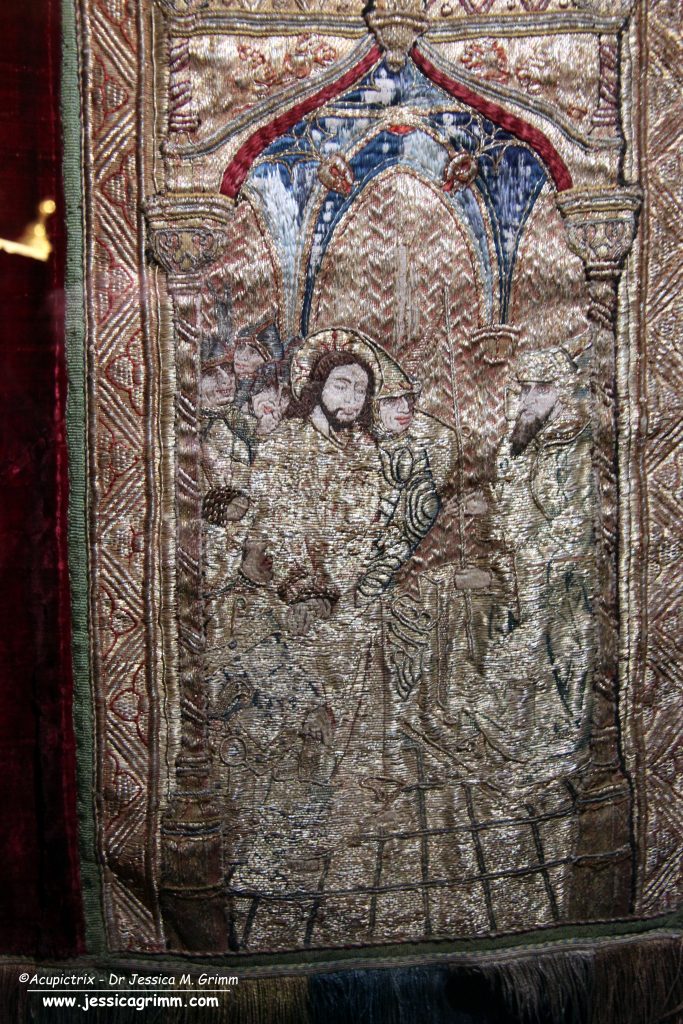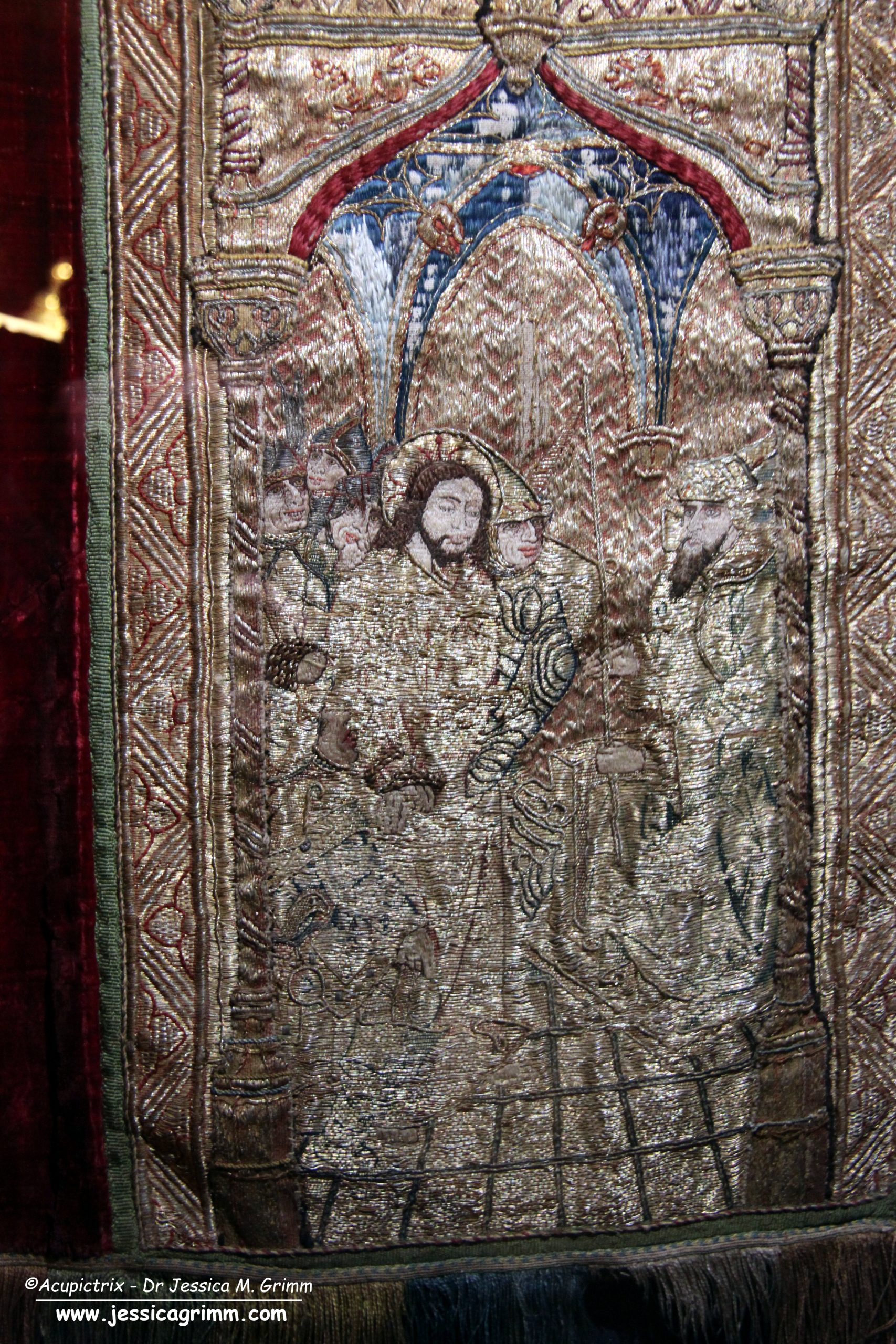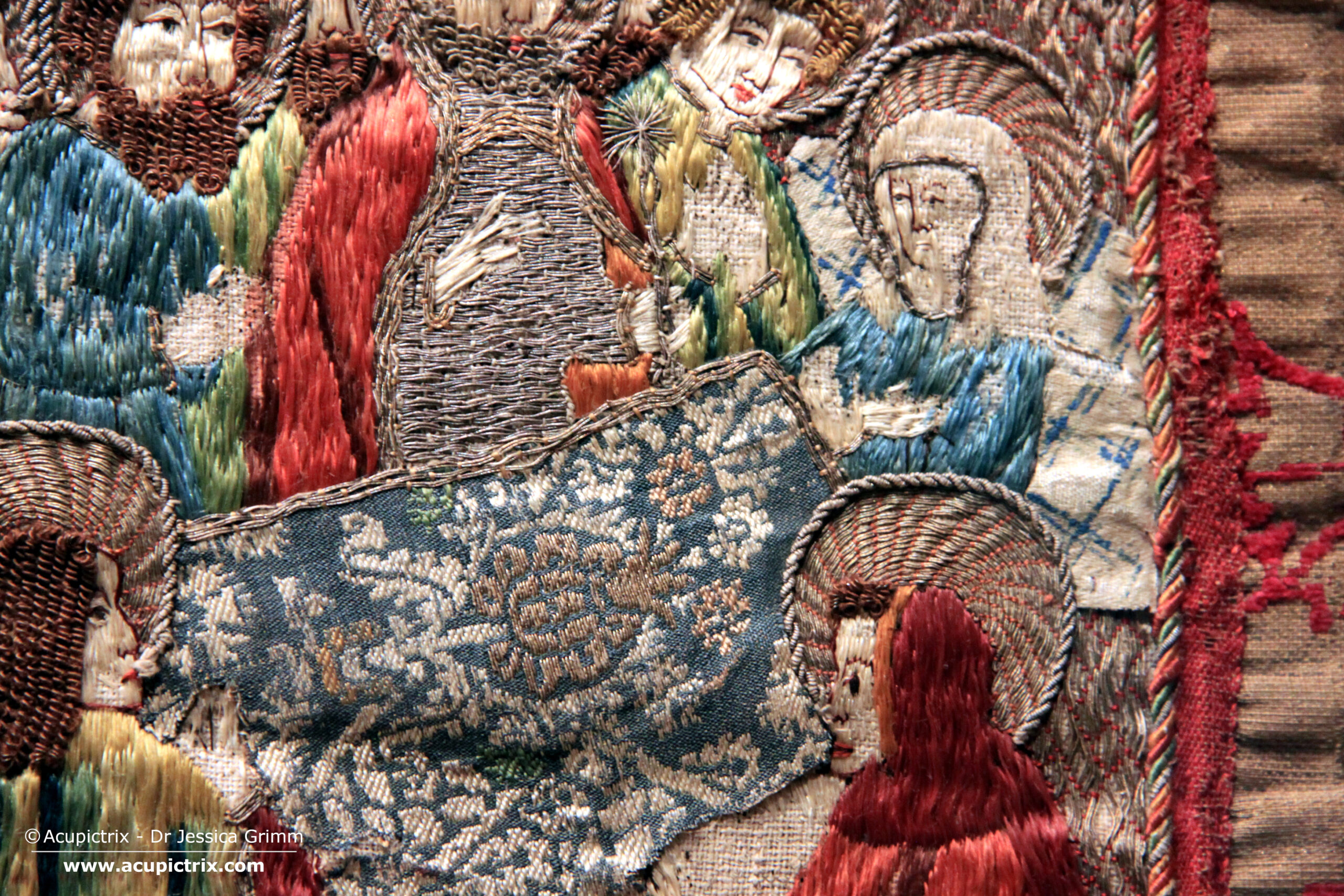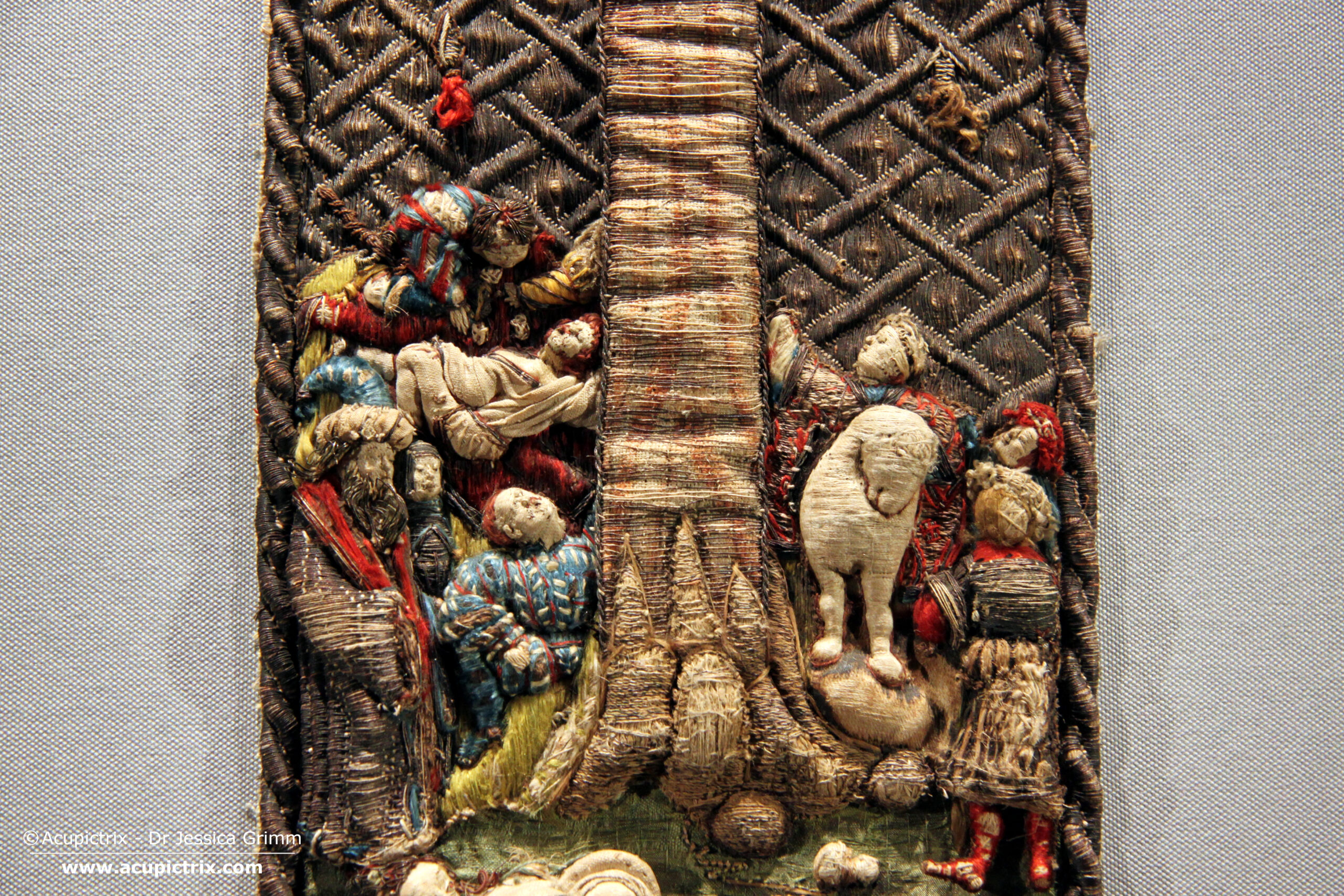Last week, I wrote about the embroidered late medieval vestments on display in the St Nicolai Church in Kalkar. We looked in depth at the richly embroidered chasuble donated by Wolter van Riswick in AD 1530. This week, we’ll examine a splendidly embroidered cope and dalmatic, also kept in the church in Kalkar. These vestments were also made in the Northern Netherlands around AD 1530.

The embroidery on the cope is a splendid affair. The scenes are very detailed, and there are many different figures. Looking at their faces, you will see they are all very individual. The stitching is very fine, and many different silk colours are used. Apart from the ‘fleshy’ parts, the figures are stitched using the or nue (shaded gold) technique. As many of these coloured silken stitches have fallen out and were likely replaced with colourless conservation thread, the scenes appear very golden. However, the remnants of intact or nue stitching show that it was once of the highest quality. Typical of the late medieval goldwork embroidery from the Low Countries.
Also, note the elaborately embroidered frame around the orphrey. It consists of a padded triple-zig-zag line, and trefoils fill the formed triangles. I think these borders were workshop-specific, and I don’t think I have encountered this particular one before.

The goldwork embroidery on the dalmatic is a bit simpler. Gone are the elaborate orphrey borders. Instead, the orphreys are surrounded by a common string-padded basket weave. The or nue embroidery used on the figures is also much more blocky and not so finely shaded as seen on the cope. The figures themselves are very standardised. And I am pretty sure that there are ‘twins’ out there reflecting the mass production of this type of embroidery. However, the embroidery is still good quality, just not as spectacular as seen on the cope. This probably reflects the hierarchy of the wearer of the vestments: priest versus deacon.
It was a real treat to encounter these splendidly embroidered late medieval vestments in a small town in Germany. Although Kalkar is close to the Dutch border, these late medieval vestments were not shown or mentioned at the large overview exhibition of Dutch late medieval embroidery in Utrecht in 2015. However, they testify further to the vast output of the late medieval goldwork embroidery workshops in the Northern Netherlands.
Literature
Werd, G. de, 2016. St. Nicolaikirche Kalkar. Deutscher Kunstverlag Berlin München.




